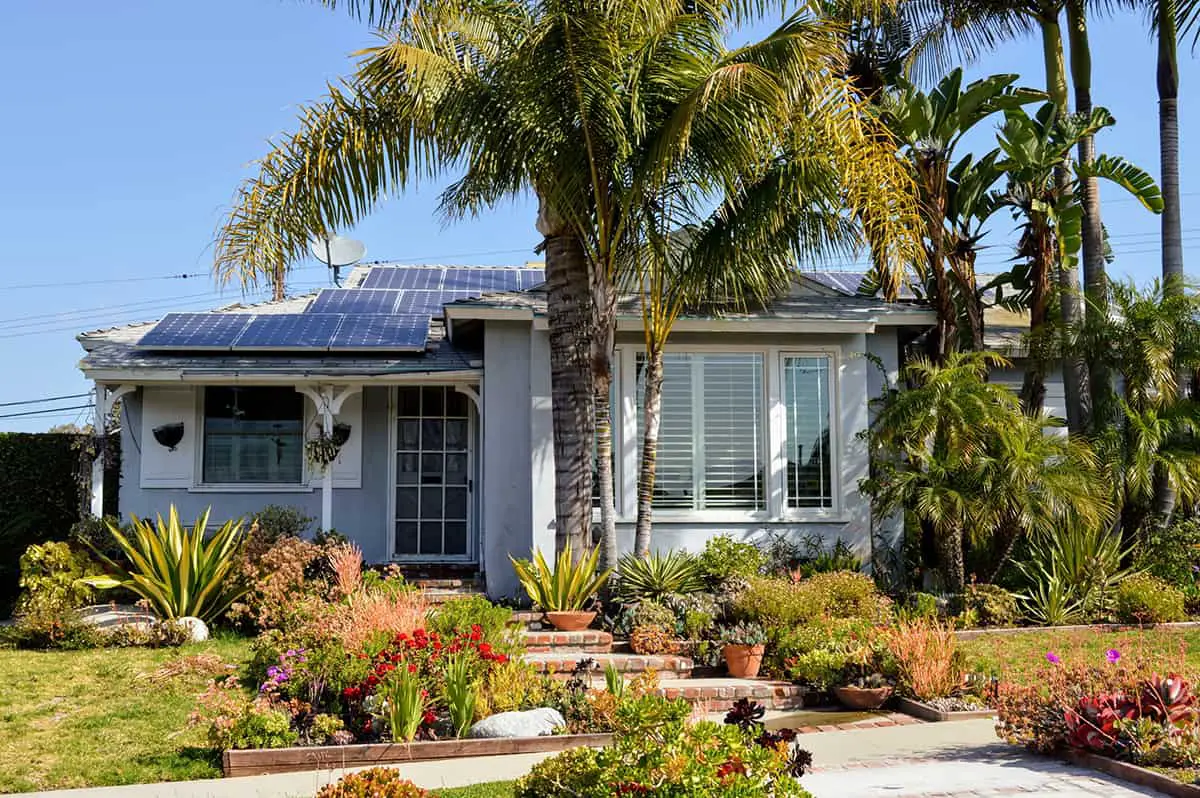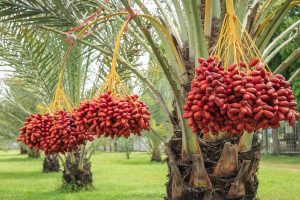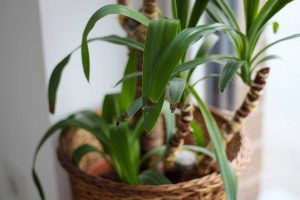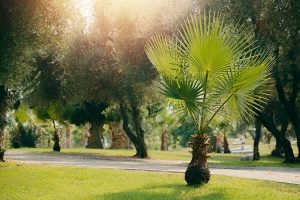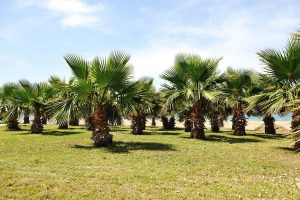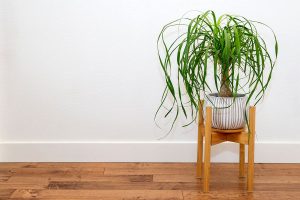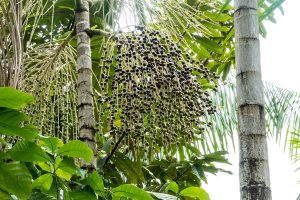Palm trees are synonymous with beach holidays and tropical lifestyles, so they are a perfect choice of plant to use in your garden if you want to create your very own version of a chilled-out island paradise.
Of course, a garden with palm trees alone may look a little neglected, so check out our recommendations below for some of the best plants that go well with palm trees.
Table of Contents
Best Companion Plant for Dry Climate Palm Trees
Most palm trees love hot climates, although there are some exceptions to this, such as the Needle Pine tree, which can be grown in USDA hardiness zones 6 to 10. Generally speaking, your typical Coconut Palm tree and Date Palm tree will be grown in regions that are warm all year round, such as USDA hardiness zones 10 to 12.
However, there can be a huge variation in rainfall throughout these zones. For example, palm trees are famously grown in both California and Florida, but California sees very little rainfall compared to Florida, which experiences considerable rainfall. Palm trees have a reputation for enjoying wet climates, but we know from the Malibu coastline that this isn’t always the case.
If you’re looking for plants to plant alongside palm trees, other moisture-loving plants are commonly recommended, such as ferns and hostas. But what about if you are growing your palm trees in a dry climate? In this instance, opt for Aloe plants.
Aloe
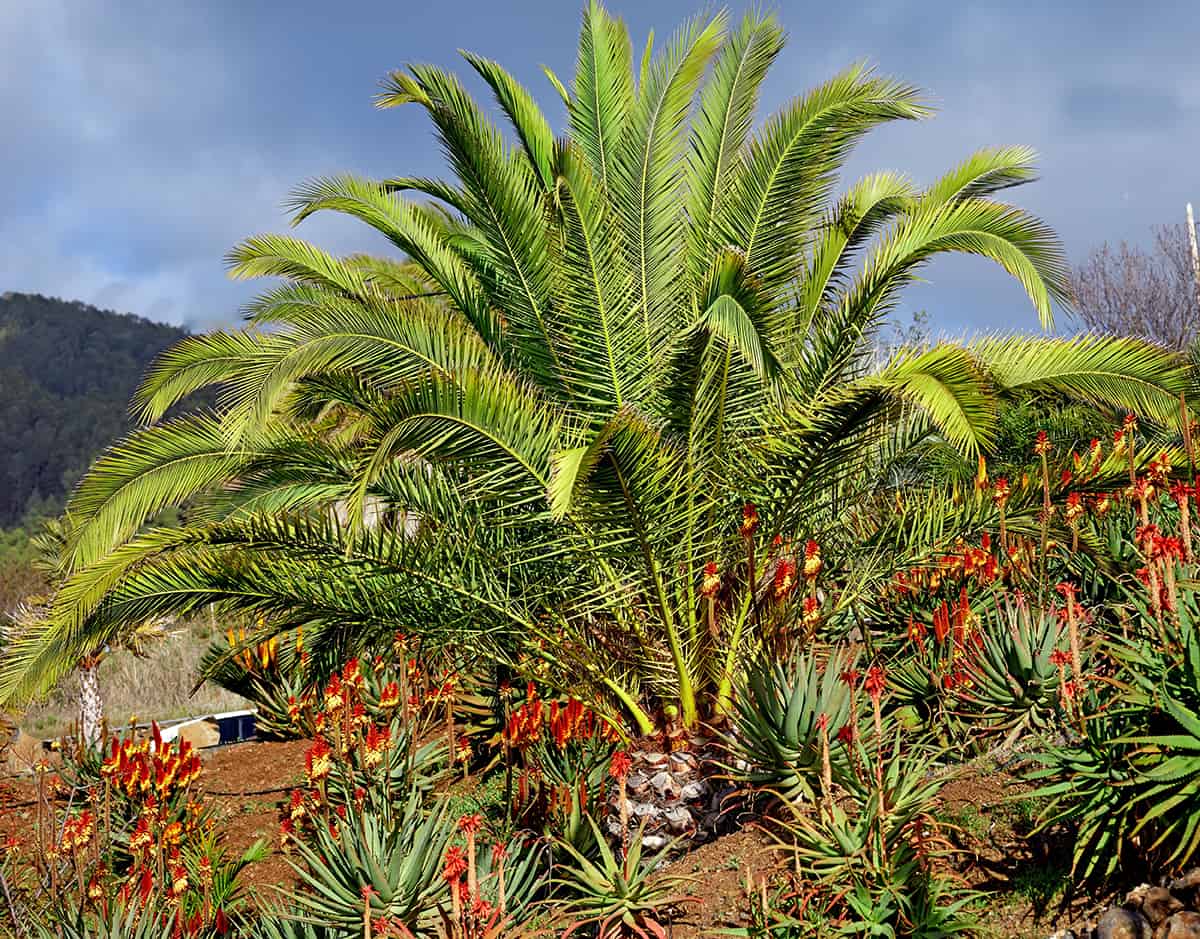
Aloe’s are succulents that thrive in hot and dry climates since they are predominantly native to South America. This makes them an ideal companion plant for palm trees growing in dry climates, such as Southern California. Aloe’s enjoy bright light but can also tolerate some shade, so plant them on the ground in between your palm trees to fill in the gaps.
Aloe’s come in a range of varieties, which will create a desert-inspired look alongside your palms. They are tolerant of drought and neglect, making them ideal for use in low-maintenance gardens.
Best Companion Plant for Wet Climate Palm Trees
If you are growing palm trees in a wet climate that mimics the conditions of rainforests, then the best companion plant is also going to be one that enjoys moist soil and has high water needs.
The best plant for the job which will also add some lush greenery around the base of the palm tree, is the fern.
Ferns

Ferns are notorious for enjoying shade and moist soil, so they are an excellent choice to use as an understorey plant beneath the canopy of the palm tree fronds. These are low-growing plants whose foliage fans outwards, providing a good level of cover to the soil. This is one of the reasons why ferns work so well with palm trees.
By preventing sunlight from reaching the soil, the rate at which the soil dries out will be slower, which is beneficial to both the roots of the ferns and the roots of the palm trees. Most species of ferns do not exceed 4 feet in height, which makes them ideal for planting with a wide range of small, medium, and large palms.
Best Plants for Underneath Palm Trees
If the area beneath your palm trees looks a little empty, plant some well-chosen species to compliment the style. The best plants to use for this will depend on the type of palm tree you have.
For example, the Pygmy Date Palm grows to around 10 feet in height when grown outside, so this will need small, low-growing plants to be planted beneath it, while the Chinese Windmill Palm grows to a typical height of around 20 feet, making it suitable for slightly larger plants, such as shrubs, to go underneath it.
In the case of tall palm trees like the California Fan Palm, which grows to an average of 70 feet, you have much more scope for growing small trees beneath the palms.
Hostas
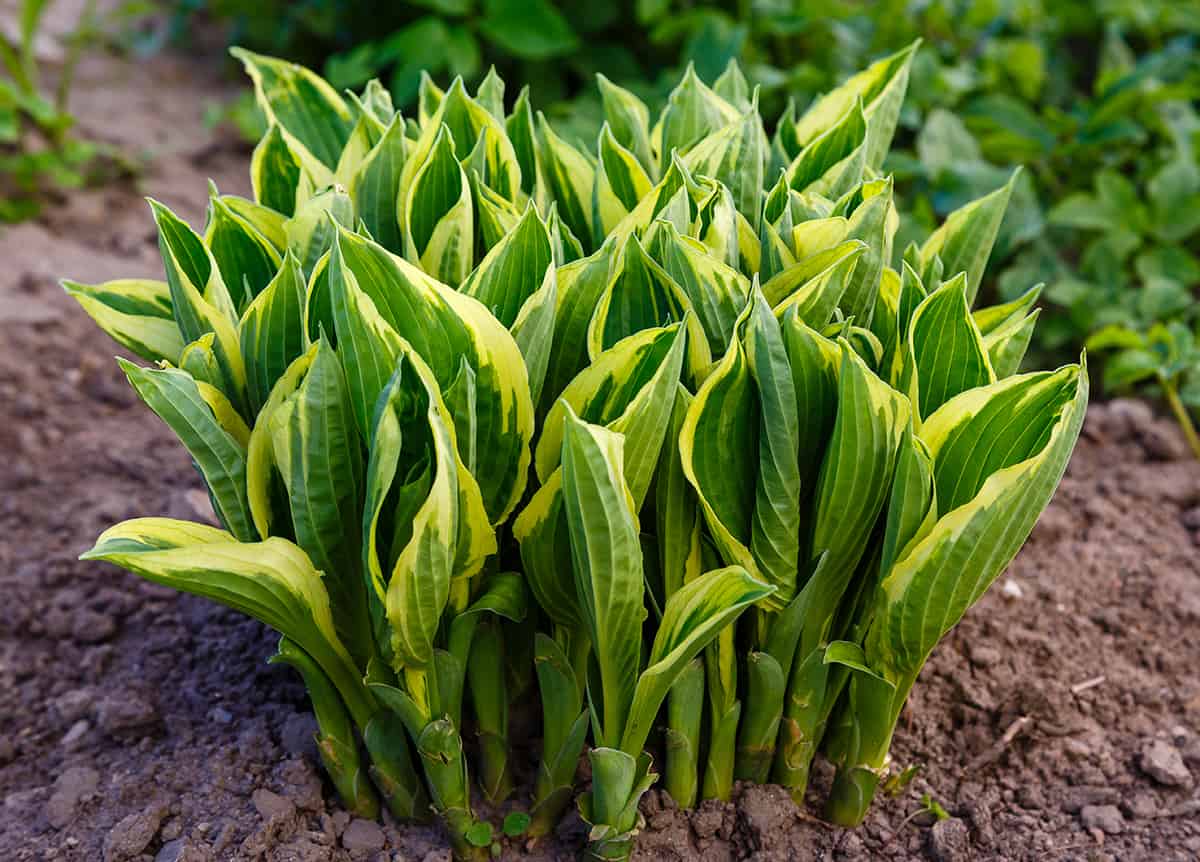
Also known as Plantain Lilies, Hostas thrive in moist soil and low levels of light, making them ideal for filling empty space beneath palm trees. These plants grow to a maximum height of just 2 feet, which makes them a good choice for growing under almost any size of a palm tree.
Hostas come in many different varieties, and they are best known for their interesting variegated foliage. They also produce attractive flowers which can be pleasantly scented, but they are most valued for their leaves. They will work well when planted beneath the fronds of palm trees which do not provide dense coverage because they do enjoy a little dappled light.
Cycads
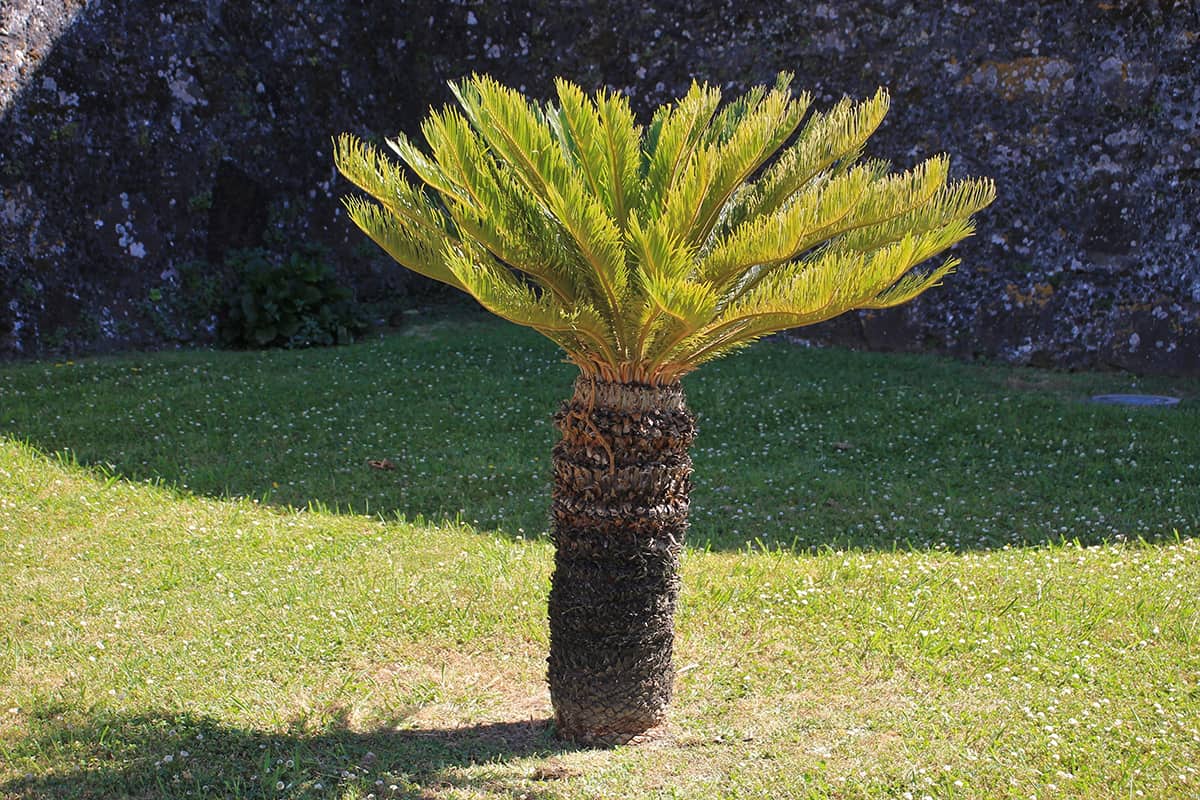
Cycads are often mistaken for palms or ferns because they share many visual similarities, but these are different genera in their own right. A popular species of Cycad is the Sago Palm, which is commonly grown as a houseplant. Cycads enjoy moderate levels of light so they work well under palm trees with sparse fronds, or you could plant them underneath the south side of a palm tree so that it isn’t deprived of sunlight.
The similar style of Cycads and Palms means that they look great together to create a stunning tropical vibe in a garden, but the thing that makes these plants so good for use with palm trees is the way that they fix the nitrogen content in the soil. Palm trees have high nitrogen needs, so Cycads will actually help the palms to thrive.
Best Plants for Creating Tropical Garden with Palm Trees
If you are more interested in creating a visual effect as opposed to considering the practicalities of companion planting, then you’ll want other plants that have a tropical style, like palm trees. Create your own tropical haven by incorporating a number of exotic plants and trees into your garden alongside your palm trees.
Birds of Paradise
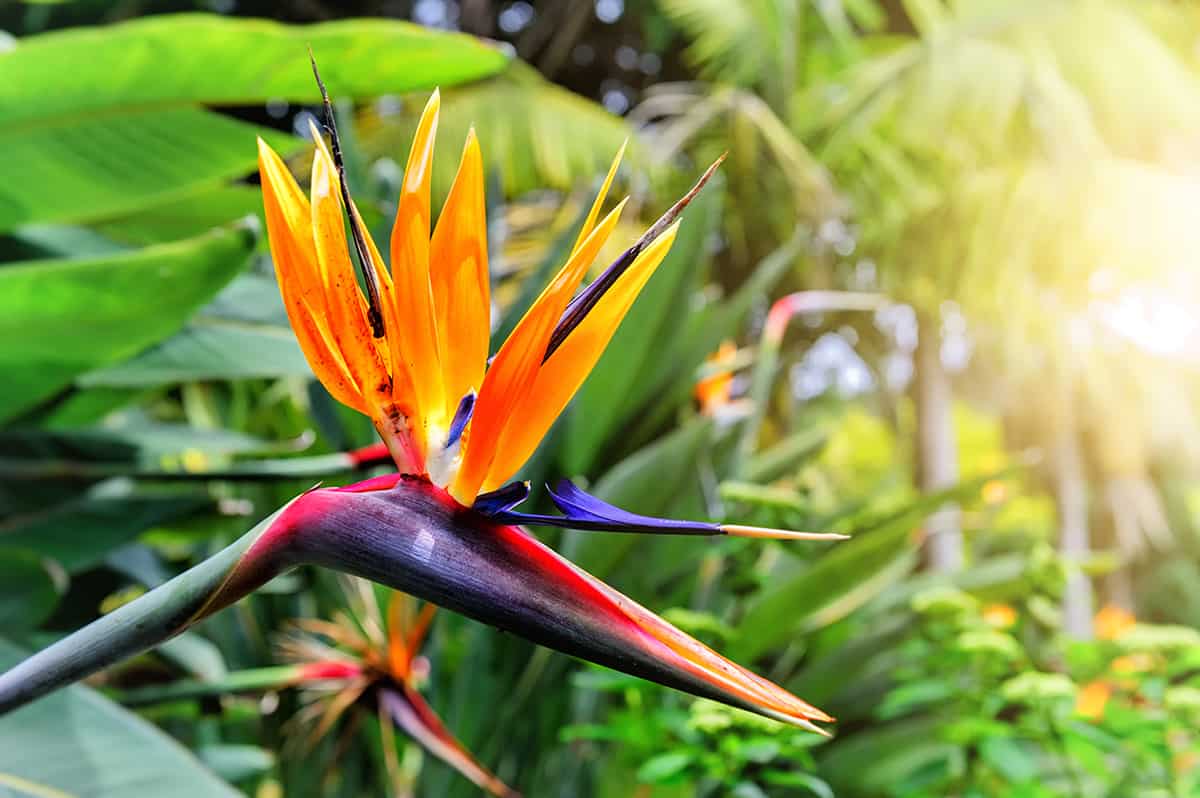
Birds of Paradise plants produce strikingly unusual flowers that closely resemble the avian Bird of Paradise. They are commonly planted alongside palm trees because they have a similar exotic vibe.
They also thrive in similar conditions to palm trees, which makes them a good choice on a practical level. Position your Birds of Paradise plants close to the palms, but not directly underneath them, since these plants need to get at least 6 hours of sunlight each day.
Banana Plant
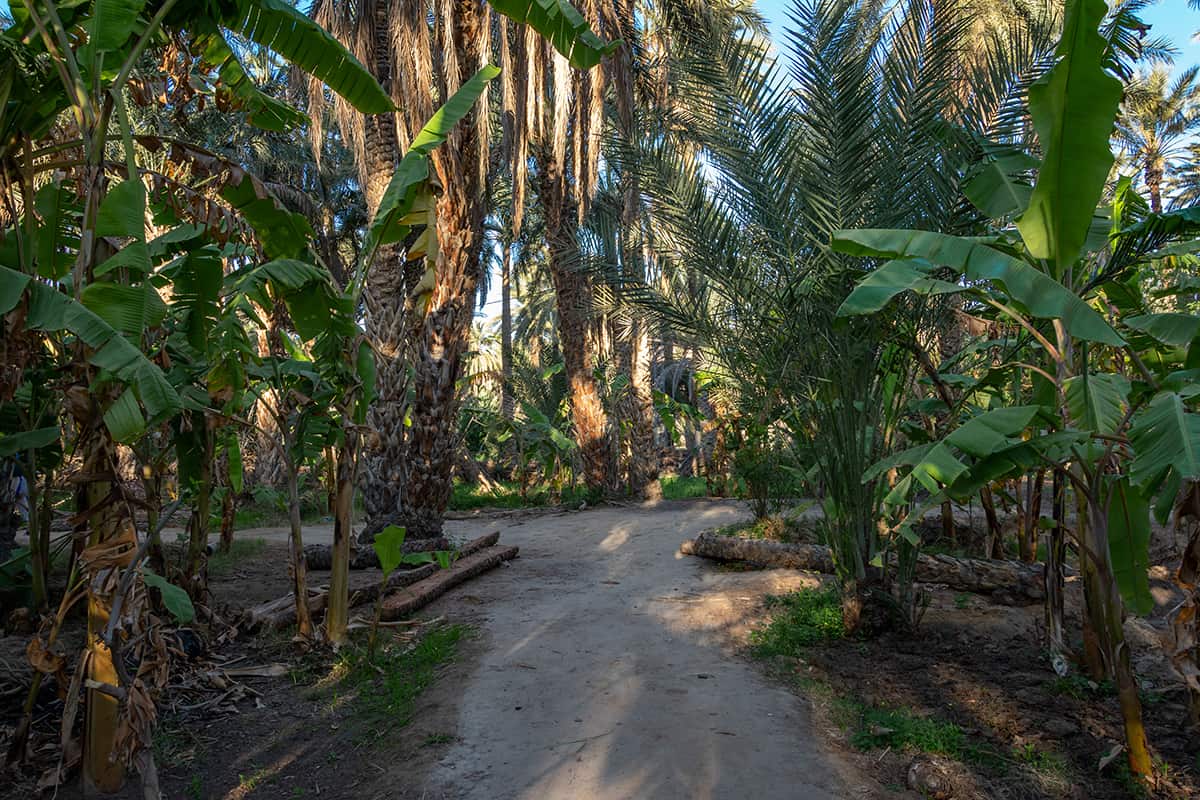
Banana plants produce stunning tropical leaves, along with the popular fruit, which can go from flower to fruit in as little as nine months.
These plants thrive in USDA hardiness zones 9-12, much like palm trees, which means they work well together in a garden. Banana plants can reach up to 20 feet in height, so they also work well as an alternative to hedging in a tropical garden if they are grown in a row.
Hibiscus

Most types of Hibiscus plants thrive in USDA hardiness zones 9-11, making them ideal for pairing with palm trees. They are tropical and subtropical plants and are, therefore accustomed to warm climates and good levels of rainfall.
These plants produce stunning flowers, which will not only create a bold floral display throughout summer but will also attract pollinators to the garden. Hibiscus plants need between 6 and 8 hours of sunlight each day, so ensure they aren’t shaded by palm trees or any other nearby plants in order for them to bloom prolifically.
Best Groundcover Plant Beneath Palm Trees
Groundcover plants can be beneficial both visually and functionally when planted beneath palm trees. They will spread over the ground to give it a greener and more lush look, but they will also block sunlight from reaching the ground, which can cause the soil to dry up.
Palm trees prefer to grow in moist soil – this is true for both ground and potted palms. Using groundcover plants to prevent the soil from drying up too quickly can greatly improve the health of the palm. It can also mean you don’t need to water your palms so often and can instead rely more on rainfall.
Asiatic Jasmine
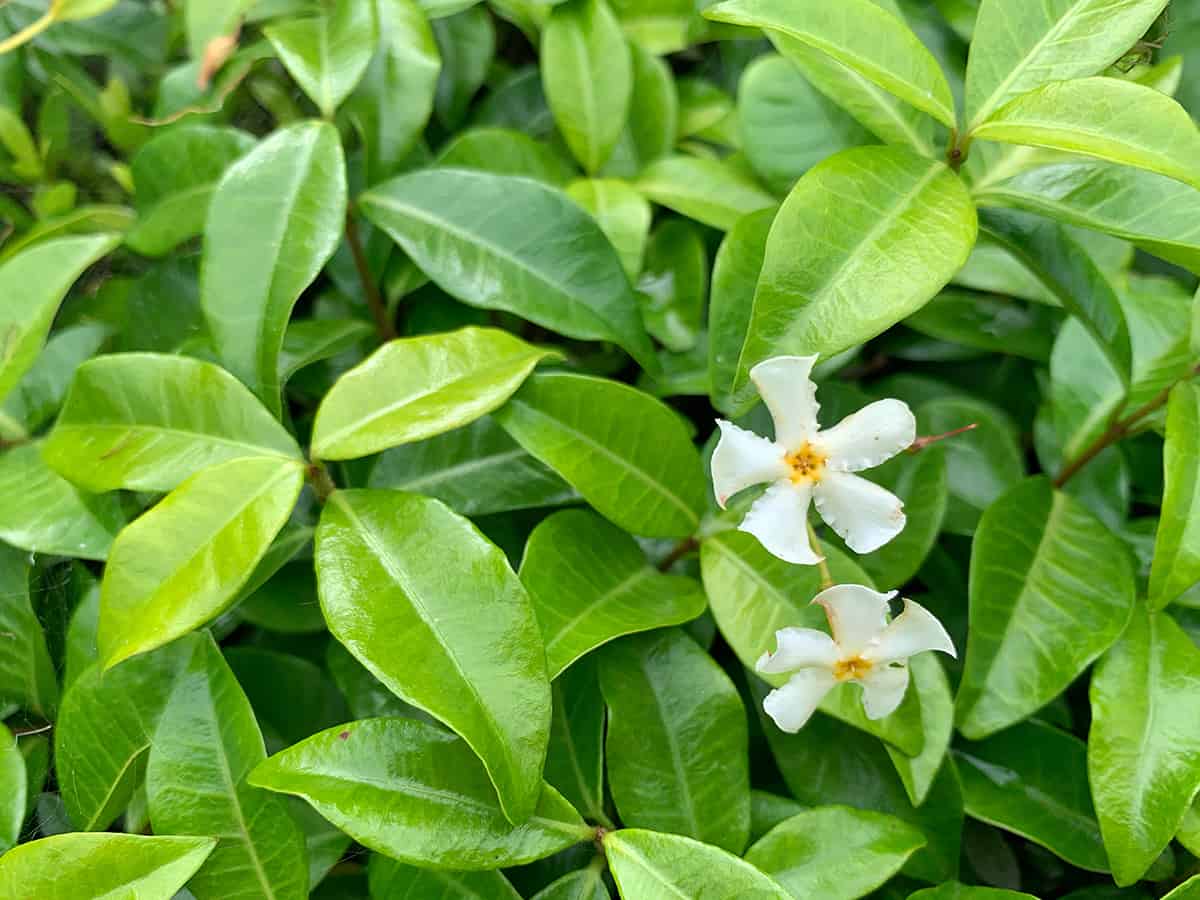
This is a tropical vine that is actually not related to the true Jasmine plant. It has an aggressive creeping nature and will grow exponentially in moist soil to cover any ground it can reach. This makes it ideal if you want to cover the ground beneath your palm trees quickly, but avoid it if you have other plants nearby that it could choke out.
This resilient plant can tolerate a range of conditions, including drought, shade, salt, and nutrient-deprived soil. It will grow well beneath the shade of your palm tree and can also be used with palms that prefer drier climates. It doesn’t tolerate foot traffic well, so use it under palms you don’t need regular access to.
The Asiatic Jasmine produces small, leathery green leaves which entirely cover the ground to make it look lush and rich, and it also produces dainty yellow flowers in ideal conditions. This is an extremely low-maintenance plant that actually grows best when you completely ignore it.
